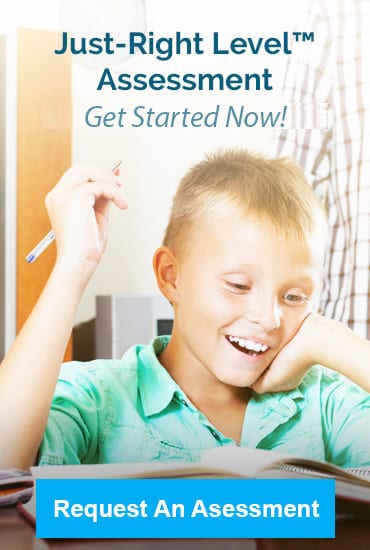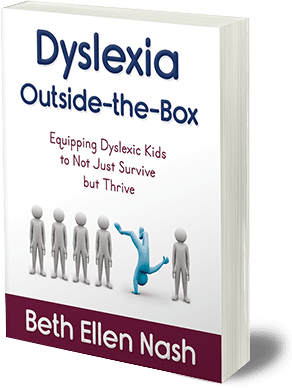Orton-Gillingham Dyslexia Tutoring and Online Options

If you are exploring dyslexia intervention options, you have likely heard of Orton-Gillingham. The core Orton-Gillingham principles of direct, explicit, systematic, multisensory phonics instruction are considered by many to be the gold standard in dyslexia intervention. Please see the related article “What is the Orton-Gillingham Approach to Dyslexia Intervention?” Many dyslexia tutoring programs have been developed that use the core Orton-Gillingham principles.
Orton-Gillingham Dyslexia Tutoring Options
Many programs have been developed to help implement the basic Orton-Gillingham approach for dyslexia tutoring and some are intended to be used in a classroom setting. Barton, Wilson Reading System®, SPIRE, Slingerland®, Lindamood-Bell, and Project Read are all Orton-Gillingham phonics-based approaches. They all require both a fair amount of training and quite a bit of time with an experienced instructor. Costs can add up quickly, since working with a tutor two to four times a week is best. In some areas the Scottish Rite or 32° Masons offer free or low-cost traditional Orton-Gillingham tutoring for those who qualify.
Barton is the most common Orton-Gillingham-based dyslexia tutoring program that parents can use at home with their children. It is still fairly expensive to purchase and can be time-intensive for the parent. If you want to go with this option, purchasing your first kit from their website provides ongoing support. Remaining levels can often be purchased used reducing the costs. There are a total of 10 levels, but many families drop out about halfway through the program because the process takes such a long time and gets boring for both the parent and student. After the student has completed these three or four foundational levels in Barton is often a good transition point from strict dyslexia tutoring to continuing to build their phonics skills doing the online programs we offer through Wings to Soar.
There is a free screener on the Barton website to make sure your student has the prerequisite phonemic awareness skills to be ready for their first level. If the student doesn’t have those prerequisite skills either Lindamood-Belle’s LIPS program or the Foundation in Sounds program are recommended first. There is also a screener to be sure the parent/tutor has the phonemic and phonics skills needed to effectively deliver the dyslexia tutoring.
Sometimes, a parent can effectively do Orton-Gillingham dyslexia tutoring themselves. However it often works better for someone else to serve as tutor, especially in the student’s teen years. Kids need the parent to be their cheerleader. They don’t want to show their weaknesses to Mom and Dad; rather, they need their approval. Sometimes parents from two different families take the training, then each can provide dyslexia tutoring for the other parent’s child(ren).
As a trained Orton-Gillingham tutor, I was excited to discover some quality Orton-Gillingham-based computer programs that I could offer through Wings to Soar including Reading Horizons and Nessy. While MindPlay and Lexia are not explicitly Orton-Gillingham-based, but they follow the same important core principles. These online programs allow students the necessary time to get the needed repetitions, but allow the student to work more independently. They also provide progress monitoring, reteaching, and built-in reinforcements or incentives. They are much more engaging than earlier software that used Orton-Gillingham approaches. We get results much faster with far less complaining when students use a combination of these programs than I ever got in my many years of one-to-one traditional Orton-Gillingham tutoring or using a single program online.
Orton-Gillingham Online Intervention Options
For the cost of a few tutoring sessions your student can get a year of access to several of these online options. The student can do 45 to 75 minutes of structured practice each day, put together by experts and presented in an engaging, interactive manner. The programs do not involve a lot of time with a parent or tutor because the programs themselves provide immediate feedback. This allows the parent to remain the cheerleader. Online programs are great because the computer provides instant impartial feedback, and there is no person to get mad at. Online programs keep an objective log of both the time spent and the results obtained. The programs adjust to provide needed teaching and additional practice if needed. They move the student ahead when a predetermined proficiency level is reached. They offer spaced repetition, ongoing reassessment, and review when needed. These programs have allowed Wings to Soar to help many more struggling students through occasional, targeted support; corrective coaching; and check-in sessions, rather than intensive one-to-one dyslexia tutoring.
In short, the drill and practice that’s needed to form the neural pathways in the brain doesn’t necessarily need to be done with a human through traditional dyslexia tutoring. There are greater learning gains, less emotional stress on the parent-child relationship, and better use of the student’s time and parent’s dollars by using the power of the internet.
Orton and Gillingham defined multisensory as reading it (visual), writing it (kinesthetic), and saying it out loud (auditory). Triggering all these senses and modalities at once cements the connections in the brain. The more diverse the connections, the better the brain can access that same information later and the more solidly that information is cemented in long-term memory.
The more senses a student can repeatedly use, the better. Therefore I take the multisensory experience beyond what Orton and Gillingham suggested with “read it, say it, write it.” I developed a list of more than 75 fun, multisensory activities to make learning more engaging and tap in to even more diverse connections in the brain. Using my multisensory approaches, a child’s brain can sometimes detour around an undiagnosed problem. And if a dyslexic child can retain and access information through a different neural pathway than a non-dyslexic child uses, isn’t that still learning?
See also “Multisensory Learning Activities”.
See also “What is the Orton-Gillingham Approach to Dyslexia Intervention?”


